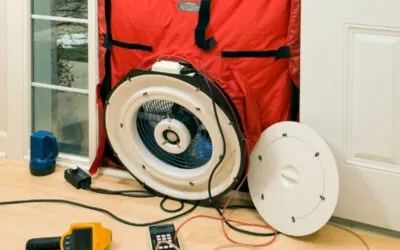Hello everyone! Welcome to Day 4 of Construction Safety Week 2024. Today, we’re addressing two critical topics: heat exposure and the proper use of fire extinguishers. Both are essential for ensuring safety on the job site and at home. As we enter the warmer months, understanding how to prevent heat-related illnesses and how to respond to fires can make all the difference in maintaining a safe environment.
Understanding Heat Exposure:
Heat exposure can lead to serious health issues, including heat exhaustion and heat stroke. These conditions can be life-threatening if not recognized and treated promptly. Construction workers and homeowners engaging in outdoor projects are particularly at risk.
Key Strategies to Prevent Heat-Related Illnesses:
- Hydration: Drink plenty of water throughout the day. Avoid caffeinated and alcoholic beverages as they can dehydrate you.
- Rest Breaks: Take regular breaks in shaded or air-conditioned areas to cool down.
- Appropriate Clothing: Wear lightweight, light-colored, and loose-fitting clothing to help your body stay cool.
- Acclimatization: Gradually increase your exposure to hot conditions over several days to help your body adjust.
- Recognize Symptoms: Know the signs of heat exhaustion (heavy sweating, weakness, dizziness, nausea) and heat stroke (high body temperature, confusion, fainting). Seek medical attention immediately if symptoms occur.
Proper Fire Extinguisher Use:
Fire safety is crucial, whether you’re on a construction site or at home. Despite the prevalence of fire extinguishers, 58% of Americans don’t know how to use them. Here’s a simple guide to ensure you’re prepared.
The P.A.S.S. Technique:
The P.A.S.S. technique is an easy way to remember how to use a fire extinguisher:
- Pull the Pin: This unlocks the operating lever and allows you to discharge the extinguisher.
- Aim Low: Point the extinguisher nozzle (or hose) at the base of the fire.
- Squeeze the Lever: Slowly and evenly squeeze the lever to release the extinguishing agent.
- Sweep from Side to Side: Move the nozzle in a sweeping motion, covering the area of the fire until it is extinguished.
Demonstration Overview:
- Identify the Correct Extinguisher: Ensure you are using the right type of extinguisher for the fire. Common types include Class A (ordinary combustibles), Class B (flammable liquids), and Class C (electrical equipment).
- Check the Pressure Gauge: Ensure the extinguisher is fully charged and in working condition.
- Position Yourself Safely: Stand at a safe distance from the fire, typically 6-8 feet away.
- Execute the P.A.S.S. Technique: Follow the steps mentioned above, staying calm and methodical.
- After Use: Monitor the area to ensure the fire does not reignite. If the fire does not go out or becomes uncontrollable, evacuate immediately and call emergency services.
Homeowners, This Is for You Too!
Heat exposure and fire safety are not just concerns for construction professionals. Homeowners, especially those working on DIY projects outdoors or using tools and equipment, need to be vigilant as well. Here are some tips specifically for you:
- Stay Cool: When working outside, follow the same heat safety measures as construction workers. Stay hydrated, take breaks, and dress appropriately.
- Fire Extinguisher Readiness: Ensure you have fire extinguishers in key areas of your home, such as the kitchen, garage, and workshop. Make sure everyone in your household knows how to use them.
- Regular Maintenance: Check your fire extinguishers regularly to ensure they are in good working condition. Replace any that are expired or damaged.
- Emergency Preparedness: Have a fire escape plan and practice it with your family. Know multiple ways to exit your home in case of a fire.
Wrapping Up:
Understanding how to protect yourself from heat-related illnesses and how to use a fire extinguisher properly are crucial skills for safety both on the job site and at home. By staying informed and prepared, we can prevent accidents and respond effectively in emergencies.
Thank you for your dedication to safety. Let’s continue to prioritize our health and well-being, ensuring we’re equipped to handle both heat exposure and fire emergencies.
Stay safe, stay informed, and always be prepared.
By focusing on heat exposure and fire extinguisher use today, we’re taking essential steps towards a safer, more secure environment, whether at work or at home. Let’s make safety a cornerstone of our culture.


